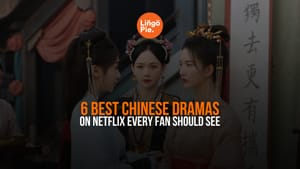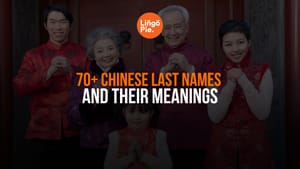Imagine a night when the moon shines its brightest, families gather to share stories and sweets, and the air is filled with the warmth of tradition.
Welcome to the Mooncake Festival, a celebration of unity, love, and the rich tapestry of Chinese culture. But beyond the mooncakes and lanterns lies a language woven with history and meaning, just waiting to be explored.
In this post, we'll dive into the essence of the Mooncake Festival and uncover the Chinese words that bring this enchanting celebration to life.

What Is The Mooncake Festival?
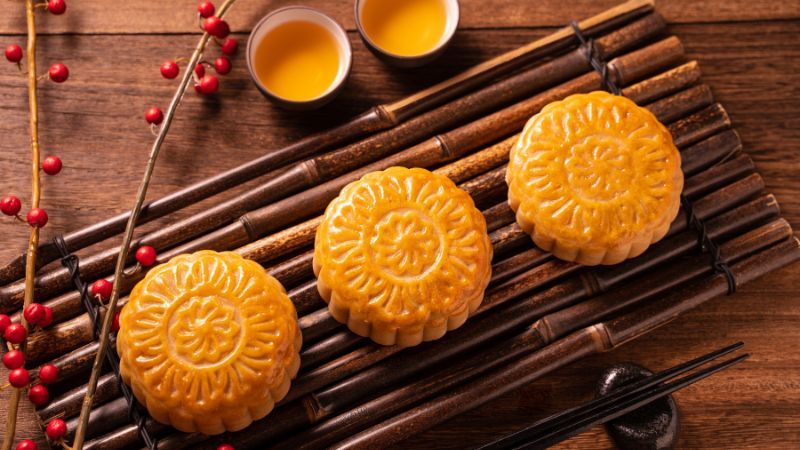
The Mooncake Festival, also known as the Mid-Autumn Festival (中秋节, Zhōngqiū Jié), is a traditional Chinese festival celebrated on the 15th day of the eighth month in the lunar calendar when the moon is at its fullest and brightest. It is one of the most important festivals in Chinese culture, symbolizing family reunions, thanksgiving, and the harvest.
During the festival, families gather to admire the full moon, share mooncakes—a round pastry filled with sweet or savory fillings—and participate in various cultural activities like lighting lanterns and sharing stories. The festival is also closely linked to the legend of Chang'e, the Moon Goddess, adding a layer of mythological significance to the celebrations.
When Is The Mooncake Festival Celebrated?
The Mooncake Festival, or Mid-Autumn Festival, is celebrated on the 15th day of the eighth month in the Chinese lunar calendar. This usually falls in late September or early October in the Gregorian calendar. In 2024, the Mooncake Festival will be observed on September 17th.
Why Is The Mooncake Festival Celebrated?
The Mooncake Festival, or Mid-Autumn Festival, is celebrated for several reasons, all deeply rooted in Chinese culture and tradition:
- Thanksgiving for the Harvest: Originally, the festival was a time for farmers to celebrate the end of the harvest season and give thanks to the moon for its role in providing a bountiful harvest.
- Family Reunion: The full moon symbolizes completeness and unity, making the festival an occasion for families to come together, enjoy a meal, and celebrate their bonds.
- Cultural and Mythological Significance: The festival is closely linked to the legend of Chang'e, the Moon Goddess, who is said to live on the moon. The story of Chang'e and her ascension to the moon adds a layer of mythology to the festival, celebrating themes of love, sacrifice, and reunion.
- Worship and Reflection: The festival also has roots in ancient moon worship practices, where people would offer sacrifices and pray to the moon for good fortune and happiness.
Read Also:

Brief History Of The Mooncake Festival
The Mooncake Festival, or Mid-Autumn Festival, has its roots in ancient Chinese agricultural practices, where people celebrated the harvest and gave thanks to the moon for its role in ensuring a bountiful yield. Over time, this harvest celebration evolved into a festival filled with rich cultural and mythological significance.
Central to the festival is the legend of Chang'e and Hou Yi. According to the tale, Hou Yi was a skilled archer who saved the earth by shooting down nine of the ten suns that scorched the land. As a reward, he was given an elixir of immortality. However, Hou Yi’s wife, Chang'e, drank the elixir to prevent it from falling into the wrong hands and ascended to the moon, where she has lived ever since. The festival honors her memory and the love story that transcends time and space.
Throughout Chinese history, the Mooncake Festival has grown from a simple harvest celebration to a nationwide festival of reunion and reflection. The festival has seen various influences, from the Tang and Song Dynasties' poetry and arts to modern interpretations that keep the spirit of the festival alive in contemporary Chinese culture.
How Is The Mooncake Festival Celebrated?
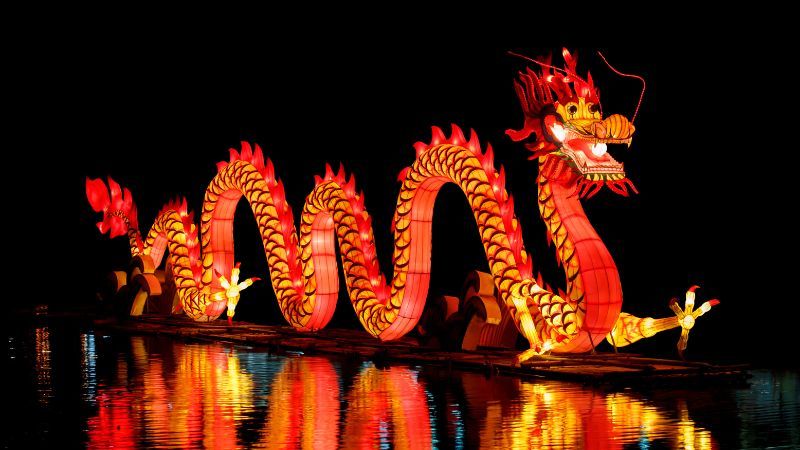
The Mooncake Festival, or Mid-Autumn Festival, is celebrated with various traditional activities emphasizing family, togetherness, and cultural heritage. Here are the Mooncake festival traditions:
1. Eating Mooncakes (吃月饼, chī yuèbǐng)
Mooncakes, round pastries filled with sweet or savory fillings, are the most iconic symbol of the festival. Families share these cakes, which represent unity and completeness, as they gather to celebrate.
2. Moon Gazing (赏月, shǎng yuè)
Admiring the full moon is a central activity during the festival. Families often gather outdoors or on balconies to appreciate the beauty of the moon, which is believed to be at its brightest and fullest on this night.
3. Lighting and Displaying Lanterns (点灯笼, diǎn dēnglóng)
Lanterns, often shaped like animals or other symbols, are lit and displayed in homes, parks, and public spaces. Children may carry lanterns in processions, adding a festive atmosphere to the night.
4. Making Offerings to the Moon (祭月, jì yuè)
In some regions, people set up altars with offerings of fruit, mooncakes, and incense to honor the moon. This practice is a nod to the festival's ancient roots in moon worship.
5. Dragon and Lion Dances (舞龙舞狮, wǔ lóng wǔ shī)
In some areas, performances such as dragon and lion dances are held to celebrate the festival, adding to the lively and joyous atmosphere.
6. Family Gatherings and Dinners (家庭团圆, jiātíng tuányuán)
The festival is a time for family reunions. Families come together for a special dinner, often featuring seasonal foods like pomelos and taro, in addition to mooncakes.
7. Storytelling and Remembering Legends
The legend of Chang'e, the Moon Goddess, is often retold during the festival. Parents share the story with their children, keeping the cultural heritage alive.
What Do The Chinese Call The Mooncake Festival?
The Mooncake Festival is called "中秋节" (Zhōngqiū Jié) in Chinese. "中" (zhōng) means "middle," "秋" (qiū) means "autumn," and "节" (jié) means "festival." Together, it translates to "Mid-Autumn Festival," which is the most common name for the celebration in China.
Chinese Words Related To The Mooncake Festival
| Chinese Word/Phrase | Pinyin | English Translation | Description |
|---|---|---|---|
| 月饼 | yuèbǐng | Mooncake | The round pastry traditionally enjoyed during the festival. |
| 中秋节 | Zhōngqiū jié | Mid-Autumn Festival | The festival’s official name, celebrating the full moon. |
| 赏月 | shǎng yuè | Moon Gazing | The activity of admiring the full moon. |
| 团圆 | tuányuán | Reunion | A key theme of the festival, symbolizing family togetherness. |
| 灯笼 | dēnglóng | Lantern | Colorful lanterns used for decoration and processions. |
| 嫦娥 | Cháng'é | Chang'e | The Moon Goddess, central to the festival’s mythology. |
| 祭月 | jì yuè | Moon Worship | The ancient practice of offering sacrifices to the moon. |
| 柚子 | yòuzi | Pomelo | A fruit commonly eaten during the festival, symbolizing prosperity. |
| 玉兔 | Yùtù | Jade Rabbit | The mythical rabbit that lives on the moon with Chang'e. |
Read Also:
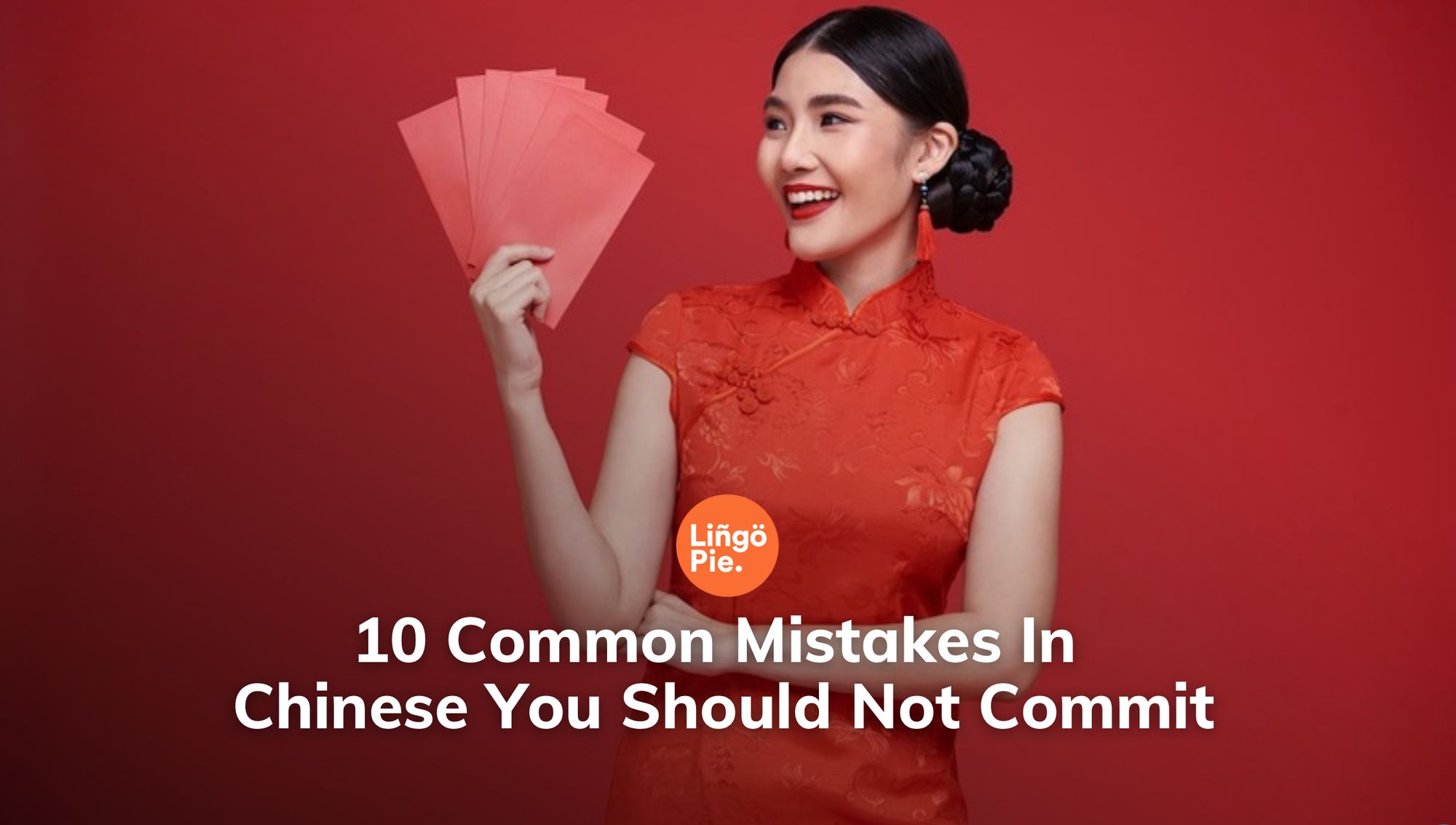
Tips For Attending The Mooncake Festival As A Foreigner

1. Learn About the Festival’s Significance:
Familiarize yourself with the history, traditions, and legends associated with the Mooncake Festival, such as the legend of Chang'e and the symbolism of mooncakes and lanterns.
2. Try Mooncakes
Sample different types of mooncakes, which come in various flavors like red bean, lotus seed, and salted egg yolk. Don’t be afraid to try traditional and regional varieties.
3. Participate in Moon Gazing
Join local gatherings or events to admire the full moon. Many people celebrate this by having outdoor parties or viewing the moon from parks and open spaces.
4. Enjoy Lantern Displays
Visit areas where lantern displays and parades are held. Lanterns are a big part of the celebration and offer a beautiful visual experience.
5. Respect Local Customs
Observe local customs and traditions, such as family reunions and moon worship practices. Show appreciation and respect for these cultural elements.
6. Use Basic Chinese Phrases
Learn and use simple Chinese phrases related to the festival, such as “中秋节快乐” (Zhōngqiū jié kuàilè) meaning “Happy Mid-Autumn Festival” and “谢谢” (xièxiè) meaning “Thank you.”
7. Participate in Local Activities
If possible, join in local activities like making lanterns or attending traditional performances. It’s a great way to immerse yourself in the festival’s culture.
8. Ask for Recommendations
Seek recommendations from locals or festival organizers about the best places to visit and activities to experience. Locals can provide valuable insights and tips.
9. Respect Traditions
Be mindful of cultural practices and etiquette, such as not interrupting rituals or traditions. Approach the festival with an open mind and respect.
10. Capture the Experience
Take photos of the mooncake festival’s vibrant scenes, including lanterns, mooncakes, and family gatherings. Just be sure to ask permission if photographing people or private events.
Final Words
The Mooncake Festival offers a rich cultural experience filled with traditions like mooncake tasting and lantern displays. As a foreigner, embracing these customs with respect and curiosity will enhance your visit. Enjoy the festive spirit, participate in local activities, and appreciate the values of family and unity that make this celebration so special.
Learn Chinese Through Chinese Movies With Lingopie!
Ready to learn Chinese in a casual and entertaining way? Lingopie got you covered! Dive into a world of Chinese TV shows and movies, handpicked to help you learn the language naturally.
With Lingopie's immersive method, you can enjoy your favorite entertainment while learning new Chinese words and phrases. All shows come with 2 sets of subtitles. Click any word to get an instant translation and then review what you have learned. It is as simple as that! The more you watch, the more you learn!
Download Lingopie from the App Store or Play Store now and get a FREE 7-day trial!
Frequently Asked Questions About The Mooncake Festival
1. How do you celebrate mooncake?
To celebrate mooncake, you enjoy sharing mooncakes with family and friends. It’s common to eat mooncakes while admiring the full moon, lighting lanterns, and participating in festival activities.
2. When should you eat mooncakes?
Mooncakes are typically eaten during the Mooncake Festival, which is on the 15th day of the eighth month in the lunar calendar, usually in late September or early October.
3. What is the Mooncake Festival in Malaysia?
In Malaysia, the Mooncake Festival, also known as the Mid-Autumn Festival, is celebrated similarly to other places. It involves eating mooncakes, lighting lanterns, and enjoying family gatherings. It’s a time for celebrating harvest, family, and the full moon.







![Qixi Festival Guide: Meaning, Traditions, and Chinese Love Vocabulary [Guide]](/blog/content/images/size/w300/2025/06/Qixi-Festival-Guide.jpg)

